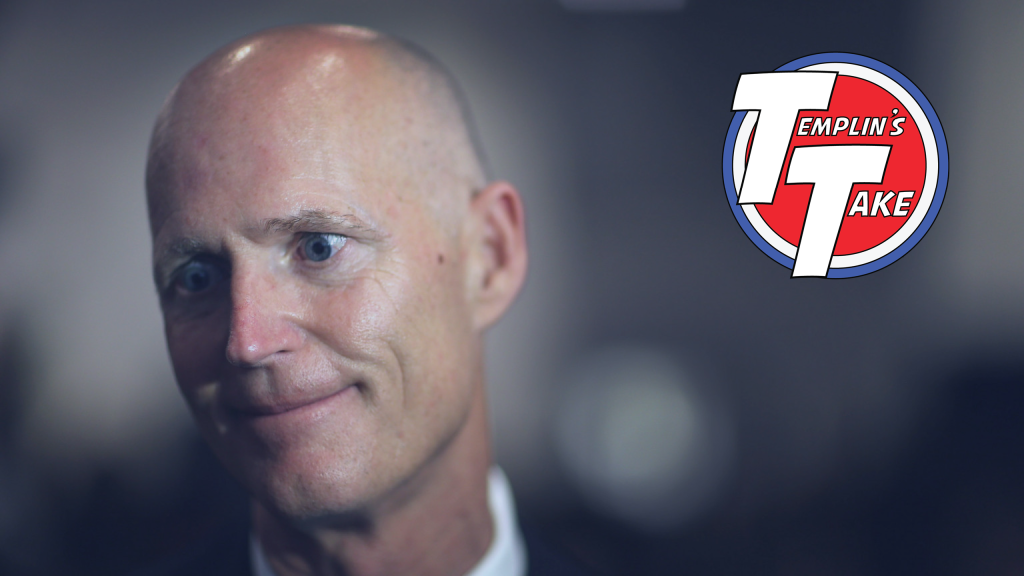 Once again, the media is all abuzz and many in the Florida Legislature are absolutely giddy at the prospect of what they call a budget surplus this year. As has been the case since 2014, numbers are flying around about that most purport to be a surplus. State fiscal analysts are predicting a surplus of about $635 million and the Governor’s office, using a bit of fuzzy math that no one outside of his administration can understand, is projecting excess revenues of $1.3 billion. While Senate President Andy Gardiner and Senate budget chief Senator Tom Lee have been cautious at best, Scott and Florida House leaders have been spraining their arms patting themselves on the back for their good fiscal stewardship and salivating over the tax cuts they hope to hand out like candy during an election year.
Once again, the media is all abuzz and many in the Florida Legislature are absolutely giddy at the prospect of what they call a budget surplus this year. As has been the case since 2014, numbers are flying around about that most purport to be a surplus. State fiscal analysts are predicting a surplus of about $635 million and the Governor’s office, using a bit of fuzzy math that no one outside of his administration can understand, is projecting excess revenues of $1.3 billion. While Senate President Andy Gardiner and Senate budget chief Senator Tom Lee have been cautious at best, Scott and Florida House leaders have been spraining their arms patting themselves on the back for their good fiscal stewardship and salivating over the tax cuts they hope to hand out like candy during an election year.
Governor Rick Scott has rolled out a $1 billion tax cut package and he and his minions have been campaigning across the state, in the Capitol and anywhere else they can find a microphone, to get it passed in the Legislature. Interestingly enough, all of the logos and printed materials look just like his last “Let’s Keep Working” election campaign leading many to believe that this is less about fiscal policy and more about the next U.S. Senate race. The tax cut package has several big ticket components including the permanent elimination of the corporate income tax for manufacturing and retail corporations (which costs $779 million each year), the permanent elimination of sales taxes paid on manufacturing equipment and machinery (which costs $76.9 million each year) and a 1% reduction on commercial property leases (which costs $339 million per year). There are also temporary sales tax holidays which would cost about $75 million per year, but these have really become sales gimmicks for the big retailers and save working families very little money. So in short, as usual, the Governor wants big tax cuts for big business while average tax payers get pennies.
The bi-partisan excitement we have seen over these so-called surpluses over the past couple of years seem to have waned this year, especially with House Democrats whose leaders are much more critical of the surplus/tax cut narrative than they have been since 2014. So how much is the surplus? $635 million? $1.3 billion? In reality…THERE IS NO SURPLUS!
 Webster’s Online Dictionary defines surplus as, “an amount (such as an amount of money) that is more than the amount that is needed.” It is true that the state has more money on hand than last year but is it more than the amount needed? Not even close!
Webster’s Online Dictionary defines surplus as, “an amount (such as an amount of money) that is more than the amount that is needed.” It is true that the state has more money on hand than last year but is it more than the amount needed? Not even close!
According to the Florida Center for Fiscal and Economic Policy; Florida ranked 50th in state tax revenue collected per person in 2014 and 49th in state tax revenue collected as a percentage of personal income. These rankings continued a decline from 47th and 48th in 2012 and 42nd and 46th in 2011. Florida is already a very low tax state and it shows. Consider these facts from the Florida Center for Fiscal and Economic Policy report, “The Condition of Florida by the Numbers.”
- 50th in public elementary and secondary revenue per $1,000 of personal income in fiscal year 2013.
- From 2003–04 to 2013–14, average teacher salaries in Florida, adjusted for inflation, fell 6.5 percent, recording the 13th highest drop among the states and the District of Columbia.
- Florida had the fewest state employees per 10,000 in population than any state in 2013, almost half of the average number of employees in all the states.
- Florida’s state government employee payroll expenses were the lowest in the nation per 10,000 in population in 2013, less than half of the average payroll expenses of all the states.
- Florida has not expanded Medicaid to uninsured Floridians earning less than 138 percent of the federal poverty level – $27,724 for a family of three, for example. About 800,000 Floridians would obtain health coverage if Medicaid were expanded.
- Florida ranks 47th among the states and the District of Columbia in the percentage of uninsured children – 11 percent, which means that about 445,000 Florida children are without health coverage.
- An estimated 3,253,333 Floridians lived below the federal poverty level in 2013, up from 3,238,581 in 2012. An estimated 7.6 percent of Floridians live at 50 percent or less of the poverty level.
To find out more visit www.fcfep.org.
 These are just a few examples of our poor record of funding critical social services, a record that is keeping Florida at or near the bottom in just about every single indicator of a strong and vibrant state. We also have huge challenges in terms of poor infrastructure, inadequate resources for environmental protection and some of the worst regulatory systems in the nation.
These are just a few examples of our poor record of funding critical social services, a record that is keeping Florida at or near the bottom in just about every single indicator of a strong and vibrant state. We also have huge challenges in terms of poor infrastructure, inadequate resources for environmental protection and some of the worst regulatory systems in the nation.
Do we have a surplus? Absolutely not! It is both irresponsible and short-sighted for politicians to be talking about tax cuts for anybody when you consider just how bad Florida’s working families are still struggling.
Consider the ongoing wage and jobs crisis:
- About 517,000 Floridians were unemployed in July out of a labor force of 9,502,000. The number of unemployed declined from 597,000 a year before. The number of jobs grew by 271,500 in the past year to a record total of 8,105,000. But state economists say 580,000 new jobs would need to be created for the same percentage of the working population to be employed as at the pre-recession peak.
- Over the 12-month period ending March 31, 2015, Florida’s unemployment insurance program paid an average weekly benefit of $237. – which ranked 46th among the states plus the District of Columbia and Puerto Rico. That payment replaced 28 percent of workers’ average weekly wage, 42nd in the nation. Florida’s “exhaustion rate” – the percentage of recipients who drew their final unemployment payment – was 64.3 percent, the highest in the nation, including the District of Columbia and Puerto Rico. Currently Florida’s unemployed exhaust their benefits after only 14 weeks, due to 2011 legislative changes.
- The average wage in Florida continued to drop in relation to the national average. For five consecutive years, the Florida wage as a percentage of the national average has declined; it fell to 87.2 percent in 2014, the lowest since 2001.
- Median household income in Florida was $47,886 in 2013, 36th in the nation and well below the $51,939 median for the entire U.S.
- Florida ranked as the fourth-worst state in 2012 in a study measuring the gap between the income of the top one percent of Floridians and the bottom 99 percent. In Florida, the top one percent earned on average 43.3 times as much as the bottom 99 percent. The average salary of the top one percent was $1,488,367 and the bottom 99 percent $34,387.
Working families need meaningful investments from state government to help get them back to work, not sales tax holidays that put pennies in their pockets while exploding the profits of Florida’s retailers. Florida continues to suffer from a major revenue problem. We are home to the 4th wealthiest population in America but are cursed with the 2nd most regressive tax system, meaning the middle class and working poor pay the bulk of the bills while the wealthy and big corporations reap all of the benefits. This so-called “surplus” and the haggling over what to do with it offers us an opportunity to discuss these issues once again as we work to close over $5 billion in corporate tax loopholes and exemptions so that Florida can begin to climb out of the hole created by 17 years of failed “trickle down” economic policies.

